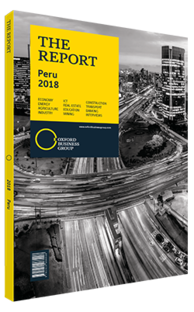Multiple investments and innovation programmes to boost agricultural production in Peru
The opening months of 2018 were a trying time, with strikes by potato growers from nine regions protesting the falling price of the crop and demanding support through the purchase of surplus volume by the government. Indeed, according to the Ministry of Agriculture and Irrigation (Ministerio de Agricultura y Riego, MINAGRI), the prices of several potato varieties more than halved between February 2016 and February 2018. This was attributed to overproduction of the crop, with then-minister of agriculture José Arista Arbildo saying that prices dropped due to several late-2017 harvests coinciding in certain regions.
To end the strike and reopen blocked transport routes, MINAGRI came to an agreement with farmers by pledging to purchase excess potato stocks for social assistance programmes. Some legislators disputed the claims of overproduction, however, noting that potato output had increased by less than 1% since 2014. In February 2018 Nuevo Perú party congressman Horacio Zevallos Parón stated that the issue was instead the result of MINAGRI’s lack of planning in regards to domestic and export demand, and that the ministry was not attending to the interests of local producers.
Recent Achievements
Despite the criticisms, MINAGRI has been working to increase agricultural yields, particularly in the high-altitude Andes region, and striving to diversify output. As a result, 2017 saw 25 local agricultural products access new international markets, while the government built reservoirs and irrigation systems serving 63,000 ha through the Sierra Azul programme. In May 2018 MINAGRI stated that it would invest PEN38m ($11.7m) in the San Antonio de Huarango irrigation project in the city of Cajamarca to the benefit of more than 4000 families. Furthermore, in June 2018 the ministry announced that it had allocated funds totalling PEN140.5m ($43.6m) to regional and local governments for the execution of 23 irrigation projects in 11 regions, which will improve output for nearly 10,000 smallholders. To facilitate more sector investment, a portal called PRESET was announced the same month for local and regional authorities to present investment projects and track their progress online.
Innovation Drive
The government’s National Agrarian Innovation Programme for Andean Cultivation (Programa Nacional de Innovación Agraria en Cultivos Andinos, PNIA), operated by the National Institute of Agrarian Innovation (Instituto Nacional de Innovación Agraria, INIA), harnesses technology to create new seed varieties and other advanced inputs to help increase production. The PNIA is being implemented in the mountain regions of Cusco, Cajamarca, Junín, Ayacucho and Puno at Experimental Agrarian Stations, as well as in some coastal areas. The programme aims to increase local producers’ competitiveness and position Peru as a quality exporter of the Andes region’s crops, which include quinoa, kiwicha, kañiwa, wheat, barley and fava beans. In June 2018 MINAGRI completed improvement works to the Andenes station and greenhouses in Cusco, in which it invested PEN4m ($1.2m) to boost research activities and technology transfer.
The INIA also manages the National System for Agrarian Innovation, aimed at raising agricultural yields through the application of new technologies, research funding and fostering foreign trade. In collaboration with the World Bank and the Inter-American Development Bank, it has funded numerous projects, such as the application of biotechnology for the cultivation of berries and the certification of coffee varieties in Cajamarca, processes to improve the quality of coffee produced in Junín, a programme to develop an elite strain of artichoke in the Junín region and the creation of frost-resistant quinoa in Puno.
In terms of livestock, the recently launched National Livestock Development Plan 2017-27 targets increased revenues and competitiveness for small and medium-sized operations by applying new technology to production, promoting more sustainable resource use and widening market access for local animal products.
You have reached the limit of premium articles you can view for free.
Choose from the options below to purchase print or digital editions of our Reports. You can also purchase a website subscription giving you unlimited access to all of our Reports online for 12 months.
If you have already purchased this Report or have a website subscription, please login to continue.

